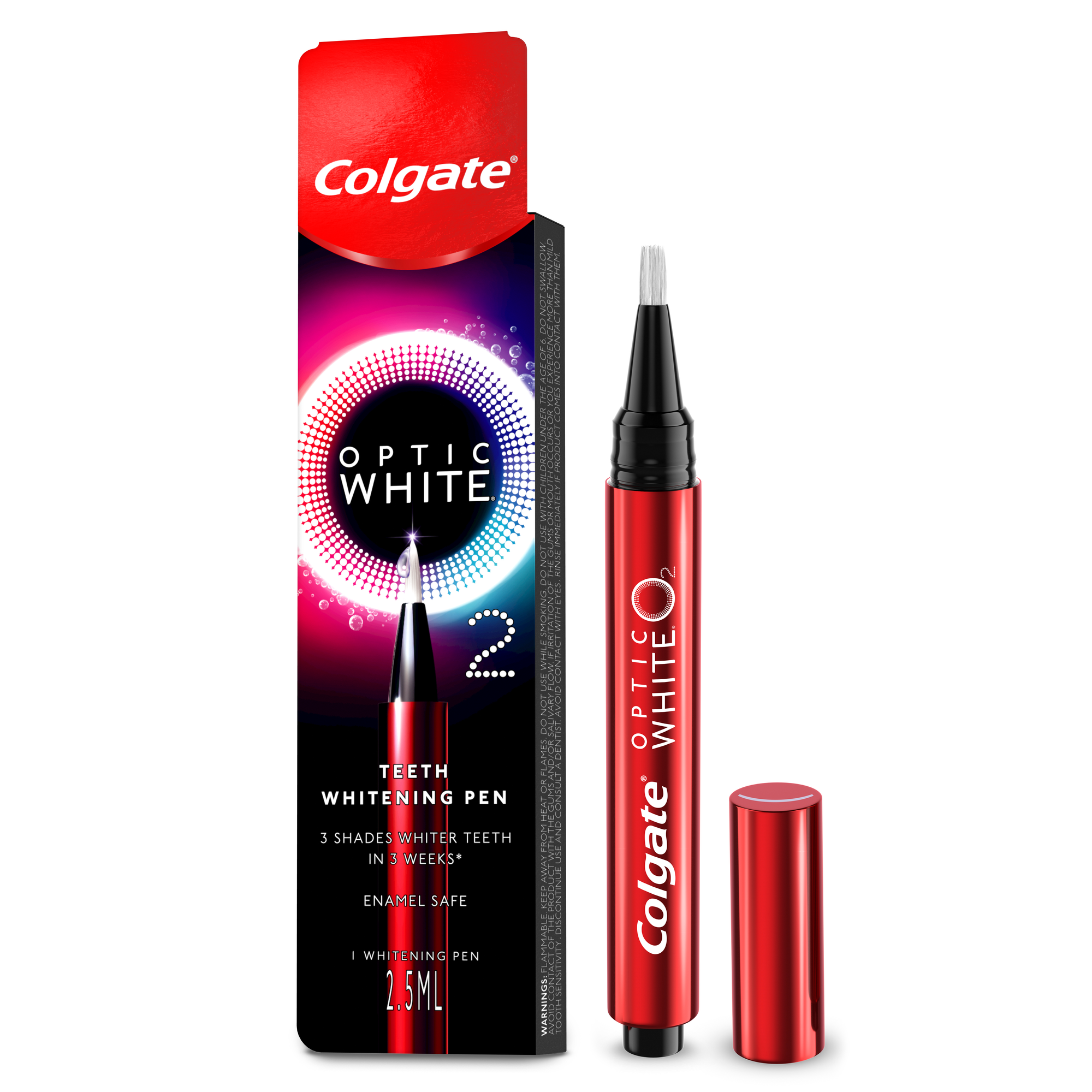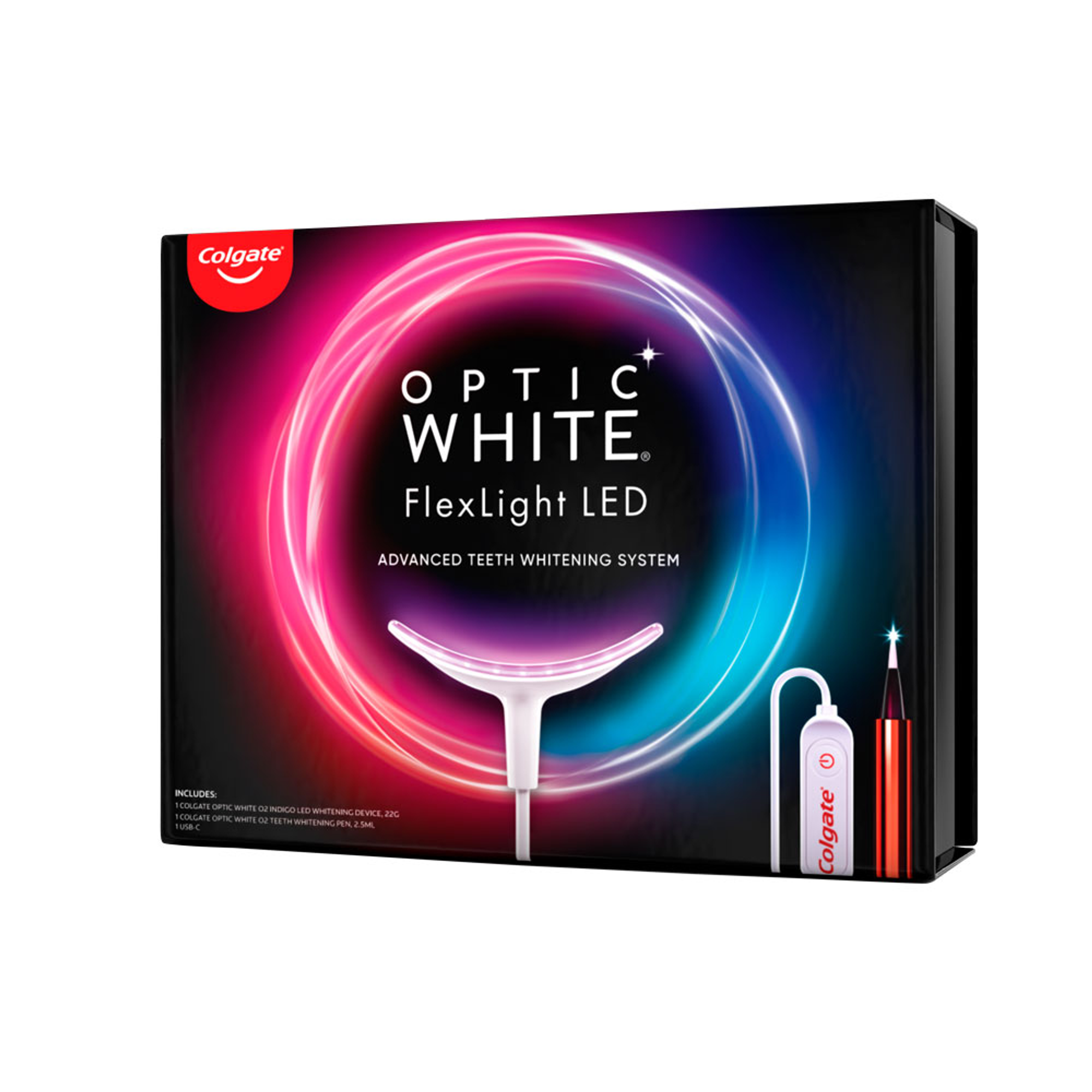
Use daily for teeth colour-correction
How Do Whitening Gels Work?
It's natural to be curious or concerned about what's in dental whitening gel and how it works. Whitening gels have bleaching ingredients and are safe for most teeth. Most gels contain hydrogen peroxide and several other added ingredients to improve the product's performance and flavour.
Common Ingredients in Whitening Gels
- Carbamide Peroxide and Hydrogen Peroxide - An ingredient often used in dental whitening gels is carbamide peroxide, a common bleaching agent in many dental products. It's a source of hydrogen peroxide, which bleaches teeth through a reaction with existing stains, changing their chemical structure to remove discolouration. According to NTUC Health, bleaching agents like hydrogen peroxide and carbamide peroxide permeate into the tooth enamel and break up stains into smaller, less visible components.
- Slow-Acting and Quick-Acting Whitening Gels - Dentists can supply carbamide peroxide as a slow-acting bleach for you to use at home. During an initial appointment, your dentist takes an impression of your mouth and at a follow-up appointment, you receive whitening trays and whitening gel to apply in the trays regularly at home. Quick-acting whitening gels that dentists use in-office contain higher concentrations of hydrogen peroxide. This makes the process faster than at-home whitening, but can also cause more sensitivity.
- Other Ingredients - Many teeth whiteners include added ingredients to help decrease tooth sensitivity. Two common whitening gel ingredients are potassium nitrate and amorphous calcium phosphate, both shown to reduce sensitivity. Sensitivity is usually temporary and decreases once treatment has been completed, according to College of General Dental Practitioners Singapore.
Dental Whitening Candidates
Dental whitening gels lighten teeth and remove stains effectively, but they aren't for everyone. Teeth whitening is not suitable for children under the age of 16, according to SingHealth. Also, it is also recommended for people with the following conditions to consult a dentist before undergoing any teeth whitening procedures: worn tooth enamel, receding gums, sensitive teeth, untreated cavities and heavily restored teeth.
In fact, everyone should consult their dentist before using a whitening gel. Teeth with very dark stains, crowns or fillings might not have good results from over-the-counter dental whitening gel products. Your dentist can advise the best way forward.
Tips for Home Use
Before starting a bleaching treatment with a teeth whitening gel, see your dentist. They can make a custom tray to fit neatly with the contours of your mouth and explain how to properly use a gel. For example, you always need to brush your teeth before applying the treatment gel. Depending on the product, you may need to wear the tray for a few hours during the day or overnight. Your dentist might recommend using the mouth tray for about two weeks to get the desired results. Be careful not to swallow any gel. Gently remove any residue that might be left on your teeth or gums with a cloth, a clean finger or a soft toothbrush, and then rinse your mouth well.
Try other teeth whitening products to reveal the bright new smile you want! >
Side Effects of Teeth Whitening Gels
Some people have safety concerns about using whitening products. According to NTUC Health, patients may experience mild side effects like gum irritation, mouth ulcers or sore throat caused by the whitening ingredients after treatment.
Both gum irritation and tooth sensitivity usually stop once you're done treating your teeth. The best way to help avoid and prevent these possible side effects is to whiten follow the directions of your dentist.
Using a whitening gel is a good way to make your smile brighter, so ask your dentist if you're a suitable candidate for whitening. To help maintain a whiter smile, floss daily and brush twice a day with a whitening toothpaste. Keep up with your regular dental appointments — the polishing action of a professional cleaning treatment is essential for fighting surface stains. With a little work, you can say goodbye to yellowing teeth and hello to a revitalised smile!














